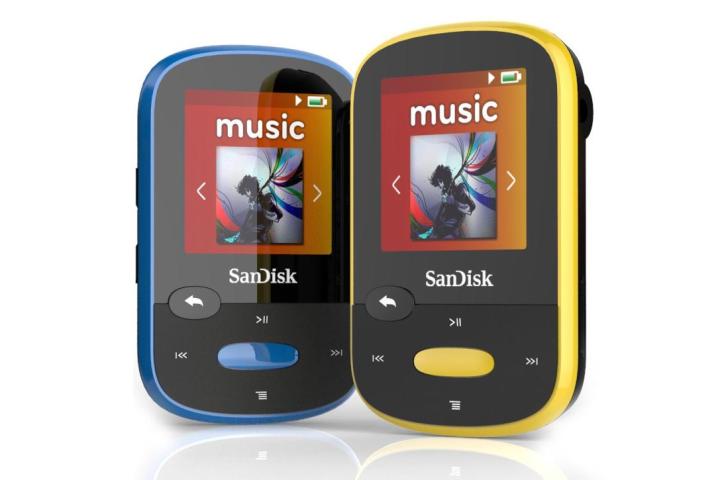
With mind-blowingly cutting edge features such as a “clip that enables it to securely attach to clothes,” a “large LCD screen for easy on-the-move navigation,” and a “memory card slot for added capacity for even more music,” SanDisk seems to have inadvertently discovered backward time-travel: behold, the Clip Sport MP3 Player.
All jokes aside, trying to decypher what SanDisk was thinking with the development and release of this decidedly old-school device has us scratching our heads — we listed the ancient tech (MP3 players) as one of our gifts you should return during the 2013 holiday season. Clearly, though, SanDisk feels differently. To market the Clip Sport, the company is targeting those with active physical lifestyles. But will it work?
SanDisk’s senior director of strategic business development, Hugh Cooney, boasts that “the Clip Sport MP3 is the newest addition to [Sandisk’s] line of MP3 players, and its sleek form factor, lightweight design, attached clip and long battery life make it the perfect companion for runners, fitness buffs and anyone on-the-go.” And while we’ll grant that Sandisk’s new player does have a little something over the iPod Shuffle – namely, a screen – most folks we know tend to stay locked into their workout when working out, and are less interested in bringing their activity to a screeching halt just to develop a playlist on the fly.
Could this wind up being a really bad move on SanDisk’s part? A quick Google search reveals countless run-of-the-mill flash drives available at less than half the price, with four times the storage capacity as the Clip Sport. And with capacities ranging from 4GB to 16GB (model prices range from $39.99 to $69.99) some may find the Clip Sport’s capacity-to-price ratio difficult to swallow. Also, the average mobile phone has all of the Clip Sport’s features and more these days, making the idea of a unitasker like an MP3 player even less appealing.
With a rather severe lack of progress between the SanDisk Sansa Fuze+ that we reviewed way back in October 2010 and this “new” release, we’re having a tough time getting behind the company on this particular product.


